52 Weeks of Historical How-To’s, Week 43: How to Play Golf
While the 250,000 photographs within the Lawrence Levy Collection comprise a sizeable chunk of the Special Collections’ golf holdings, the other photographs and books hold many precious gems. One of which, a book from the ‘Spalding’s Athletic Library’ – James Braid’s Golf Guide and How to Play Golf printed circa 1910, is by no means a particularly rare tome, but it is pure gold to a golf historian.
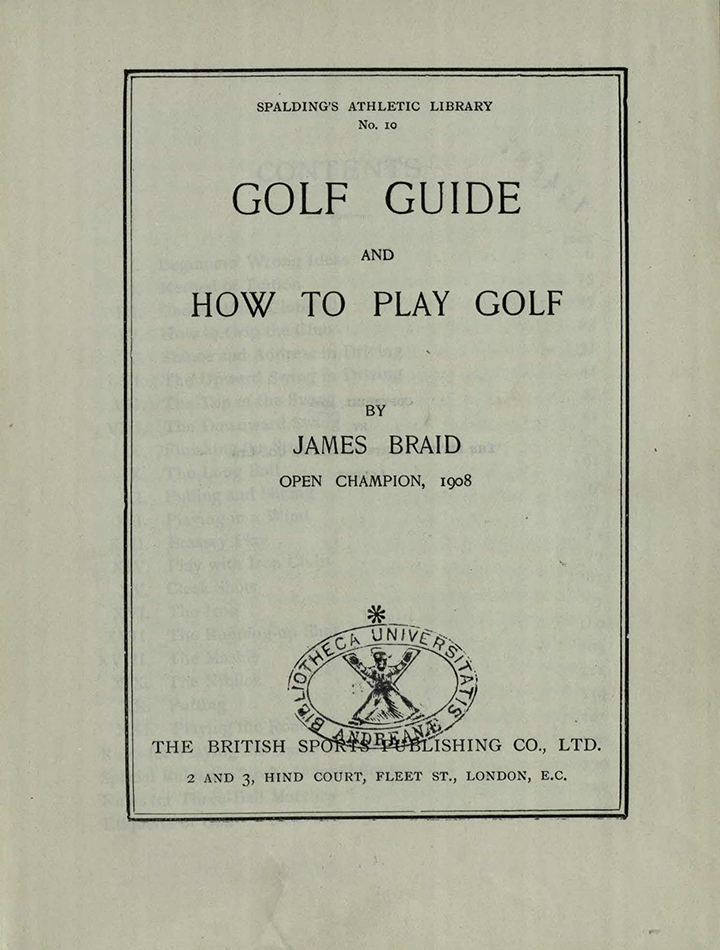
The title of the work is both ambitious (on the part of the author) and optimistic (on the part of the reader) because, whatever else golf may be, it is a very difficult game to master. Yet here we have an example of the ‘can do’ attitude of Edwardian Britain: anything is possible with a lot of effort and expert guidance. Certainly James Braid was in a position to provide the latter, given his five Open Championship wins; however the question of aptitude on the part of the reader remains unanswered.
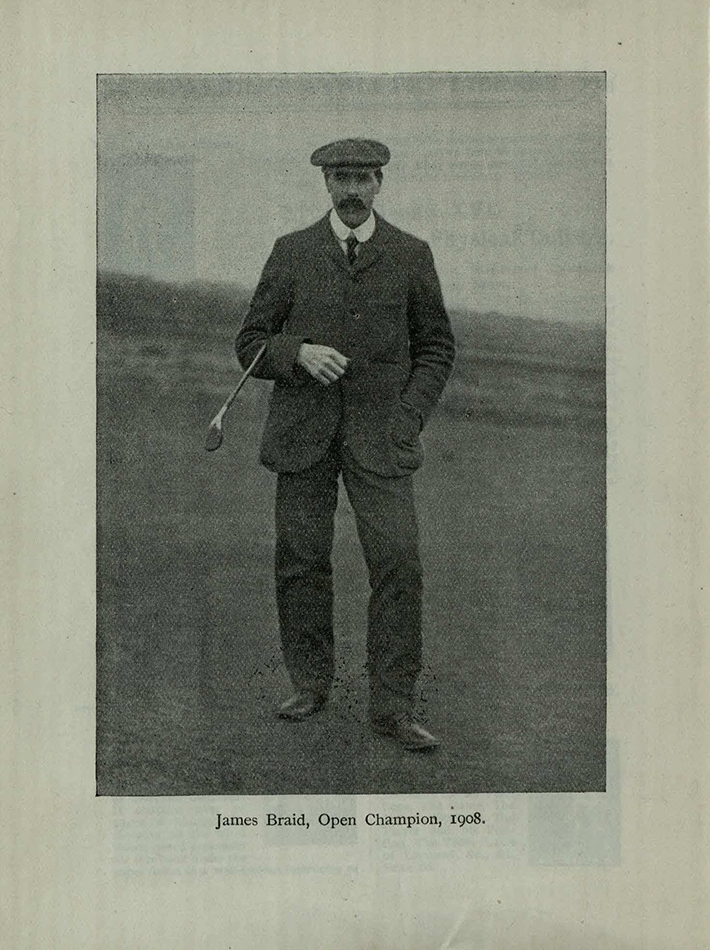
Despite the apparent ambition of Braid to teach the art of golf in such a slim volume, he was in no doubt as to the task at hand:
“…it is an exceedingly difficult thing, and that proficiency, even in the case of the most athletic and adaptable persons, is only to be acquired as the result of years of the most painstaking and patient practice…”
Thankfully my athleticism and adaptability were not called into question for this ‘Historical How To’. I was not attempting to learn golf from scratch – I have already put in the years of painstaking practice, albeit not very patiently – but I was attempting to learn to play golf with the equipment (and on a golf course) that Braid would have recognised back in the early 20th century. At Kingarrock Golf Course at the Hill of Tarvit Mansion in Fife, hickory-shafted golf clubs can be hired in order to play the authentic nine-hole course recreated in the grounds. Thus my 21st century titanium and graphite gear was abandoned for an afternoon and I was plunged back into the world of Braid in the roaring twenties.
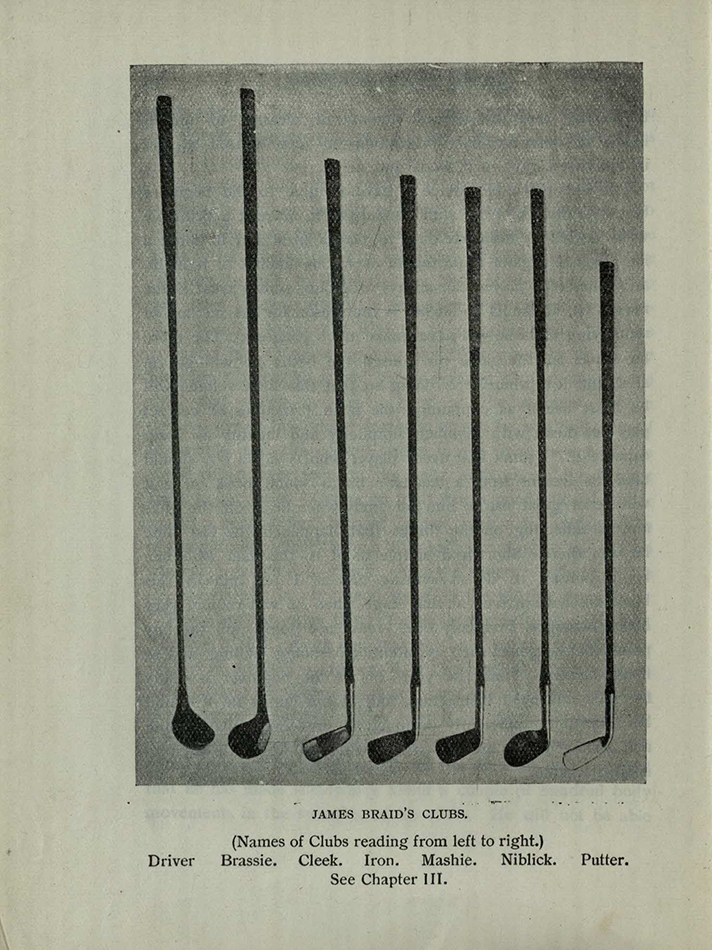
Ostensibly the equipment is remarkably similar – consisting of irons, woods and a putter. The balls however, while still spherical, belie the first indication that all is very different at Kingarrock. Made of solid rubber, they bounce far more than a modern golf ball and are much softer on impact; thus compressing more and reducing the distance of all shots – a reduction that is exacerbated by the engineering of the clubs. For example: while I would expect to hit a modern golf ball around 260 yards on average with a modern driver, at Kingarrock I managed barely 200 yards and was often shorter. Yet it was the method of hitting the ball that interested me the most: Braid’s instructions seemed at times to be counter-intuitive. While I have been taught to grip the club as though it were a baby bird – firmly yet gently – Braid urges us to “Grip the club very tightly” on some shots. Moreover the basic method of gripping the club has changed since Braid was the best golfer in the world as the images below will show.
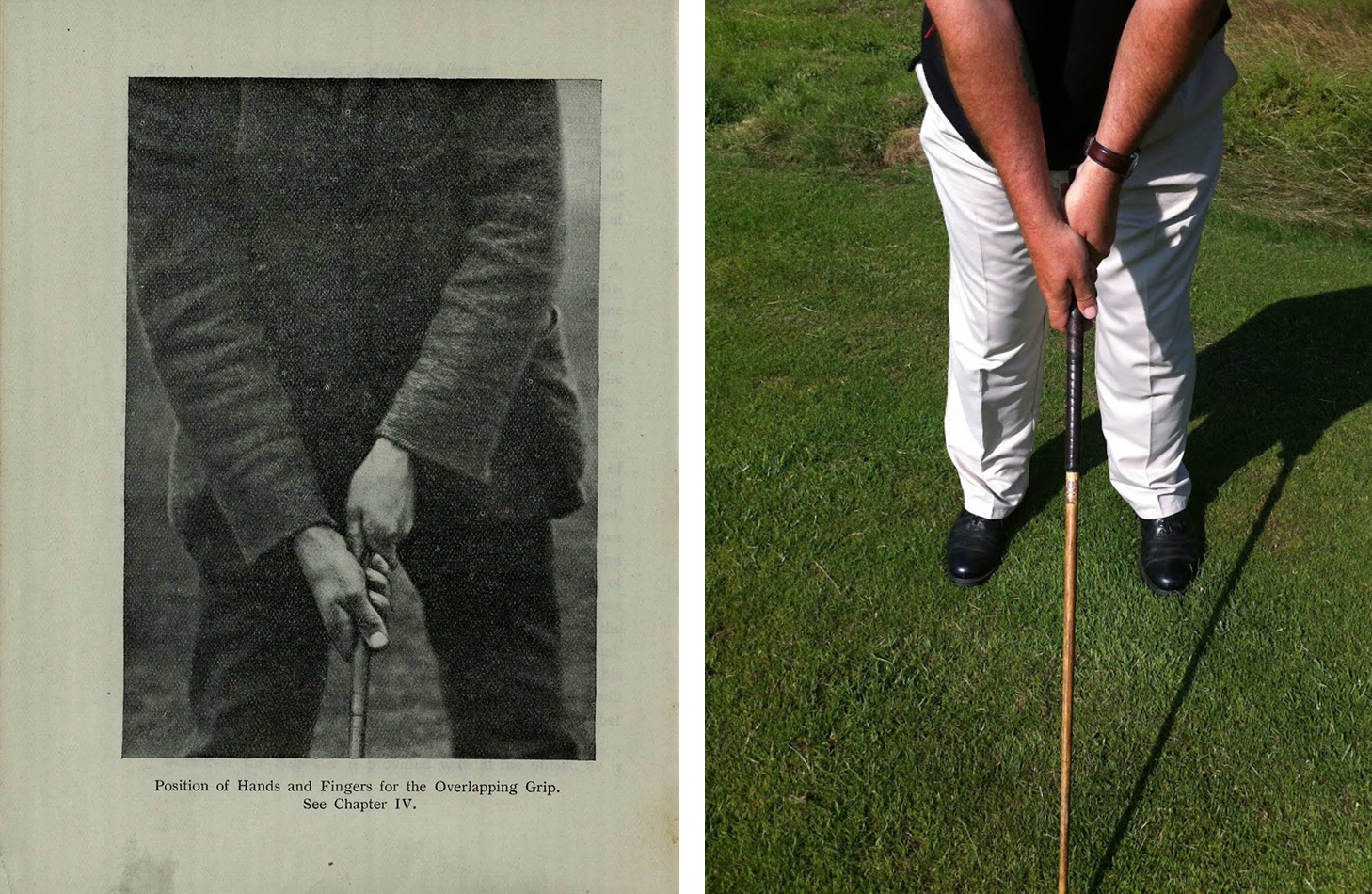
I soon discovered why Braid would practice such a ‘strong grip’ – that is with right hand underneath the shaft far more than mine. The relative ‘whippiness’ of the wooden shaft makes it difficult to control the club-head in the downswing and the club-face can become very open due to torque. This technical mumbo-jumbo, boiled down, results in a problem – a slice (where the ball bends dramatically in the air from left to right), the curse of golfers to this day. Indeed Braid describes the slice as “…the worst ball of all.” By adopting a very strong grip such as Braid’s, the club-face will close on impact and eliminate the open face that the club is attempting to deliver to the ball. With a slight adjustment to my grip I managed to work the ball with some confidence and if you are able to look closely at the photograph below (taken on the 166 yard second hole at Kingarrock), you will notice my ball (hit with a ‘spoon’ or three wood) setting off just left of the pin and it finished just right of it – a controlled ‘fade’ as opposed to a slice. My right hand is certainly ‘stronger’ than it ordinarily would be and you can see it rolling round to close the face. Of course I missed the birdie putt…
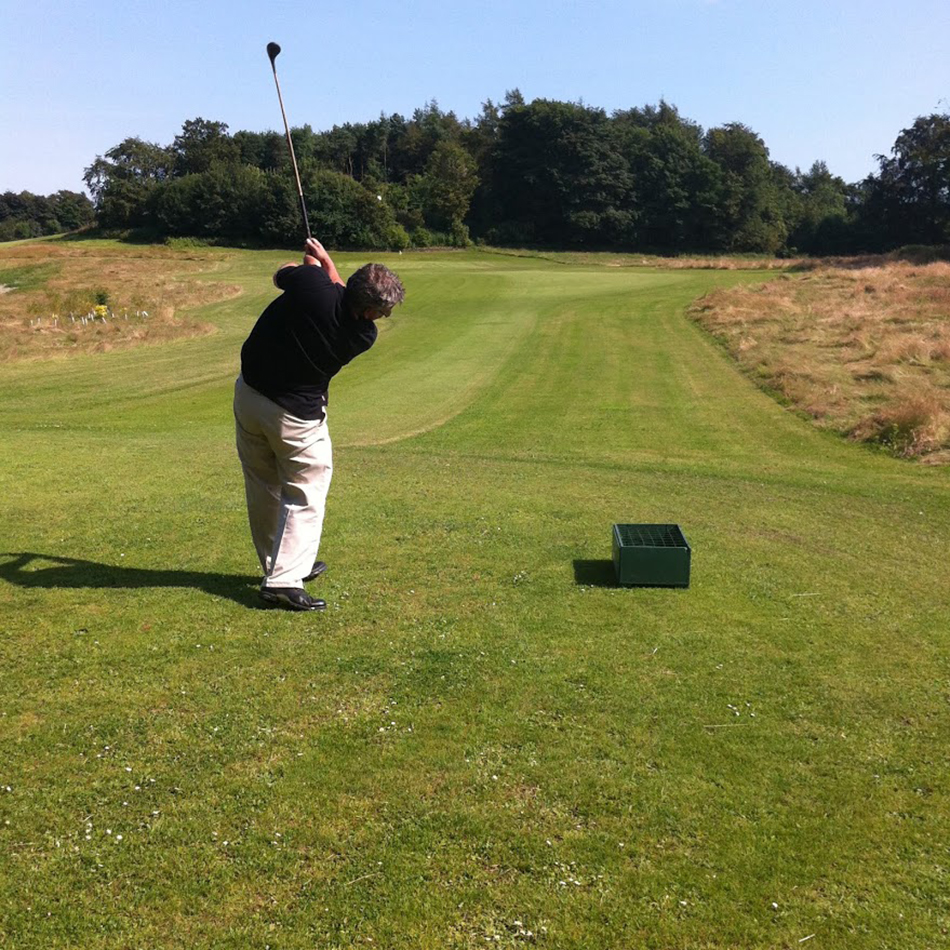
While Braid’s expertise at the game is certain, the book did cause me to wonder whether he knew exactly why he was so good at the game. One comment in particular caused me to raise an eyebrow and that was in relation to the follow-through. Braid asserted that, if all else in a golf swing had been attended to, the follow-through would take care of itself. In itself this makes perfect sense but, when linked to another of his comments – that all clubs require a different swing – it begins to sound a little disingenuous. While the peculiar designs of each club did indeed require a different method of hitting (quite the opposite of a modern player such as Justin Rose whose swing seems to remain unchanged regardless of club), the follow-through demonstrated by Braid in all of his photographs bar two, is identical. This suggests to me that regardless of how the swing was adapted to a particular club, the importance of the follow-through and the effect of it on the dynamic of the preceding swing is anything but ‘taking care of itself’. I would go so far as to suggest that the repetition of Braid’s follow-through, and thus the moment of impact through the ball, was central to his genius on the links.
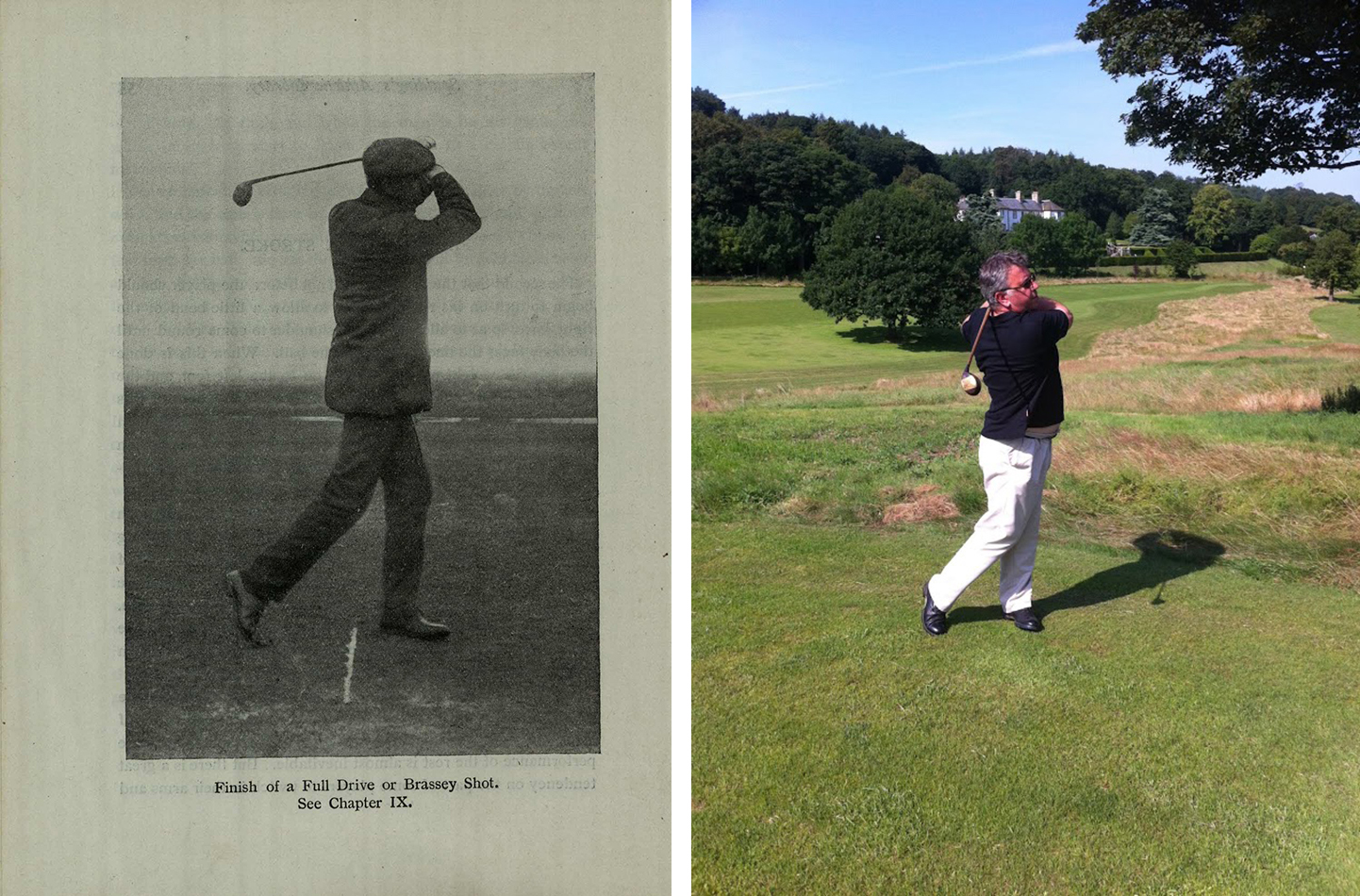
In figure 7 above we can see the same follow-through that Braid demonstrated for almost all of the clubs in his bag and is not too different to the follow-through that I attempt to replicate in figure 8 (please try to ignore my beer gut peeping through under my shirt…). However when Braid describes a punch shot (figure 9) or a full-on lash with a driver (figure 10) the difference in follow-through is not only notable, it is instrumental to the success of the shot. If I, for example, were to attempt a punch shot (hitting the ball low into the wind) I would hope for my follow-through to be similar to that of Braid’s below.
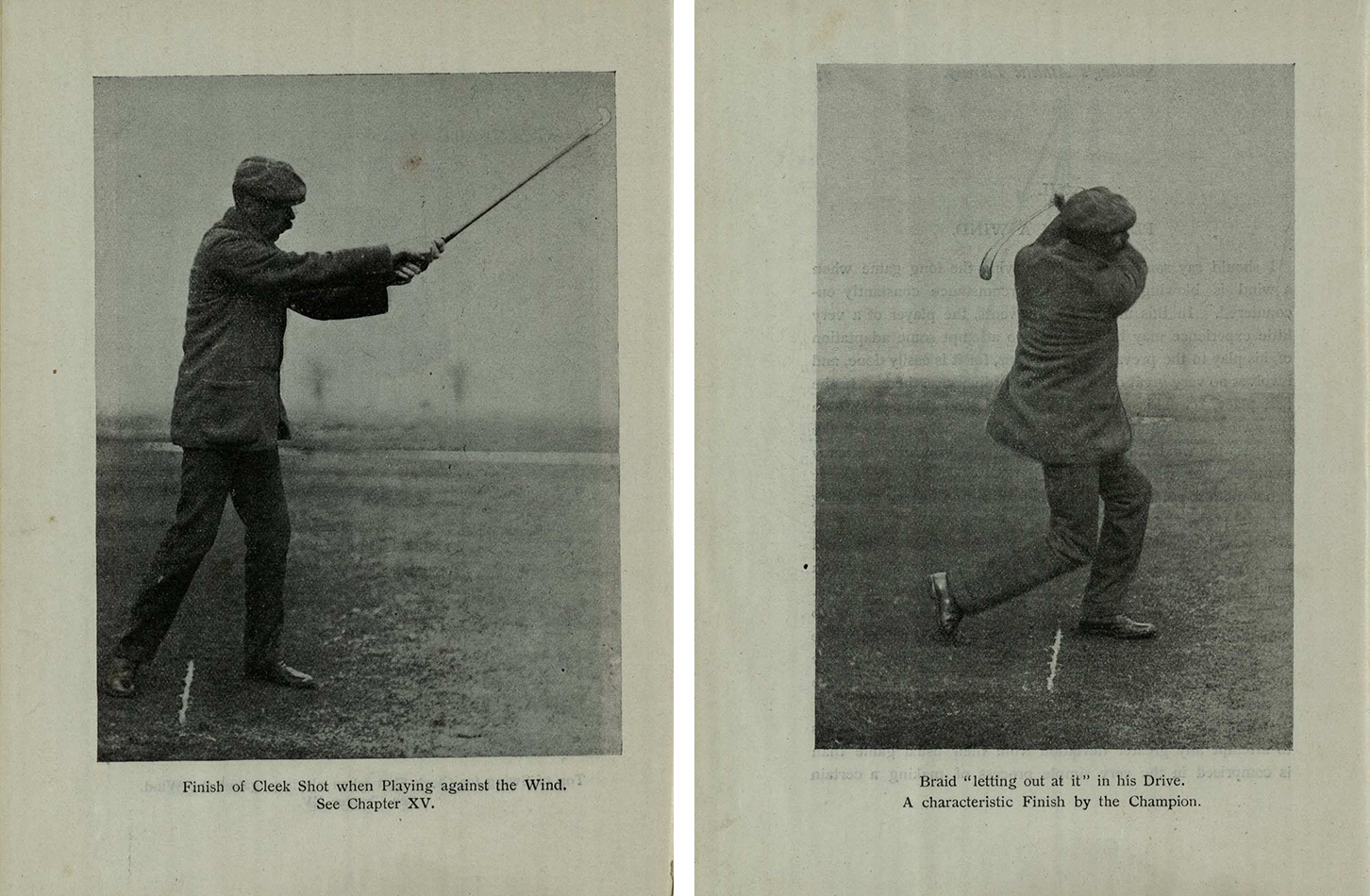
Much of what I experienced at Kingarrock was so incredibly familiar that the alien nature of the clubs and ball was forgotten in just a hole or two. Clearly I was playing golf and clearly I had my own way of playing – it became apparent within three shots that I was most comfortable hitting driver and spoon while my playing partner, Chris Toll, was most happy hitting the irons. These preferences are replicated when we play with modern clubs on modern courses; suggesting that the clubs of 100 years ago are not so different to those of today in terms of playability. Evidently the distances achieved by even the most average golfer today would astonish the likes of Braid but then the courses upon which we play have been lengthened to accommodate such technological breakthroughs and certainly most of us will not manage to go around the Old Course in par or better as Braid did with his hickory clubs. The challenge of golf remains relative to the equipment being used and it is still a difficult game regardless of equipment.
At Kingarrock the agronomy and greenkeeping, like the hired clubs and balls, are similarly of 1920s vintage. Elmwood College is involved in the maintenance regime and the course is in remarkable condition. However, the billiard table greens that we are accustomed to today are not to be found at Kingarrock and nor were they at the courses Braid played on. The pictures below show the ragged nature of the putting surface – both for Braid and the lady on the right (another photo from the Special Collections Photography Department by the way, click here to access).
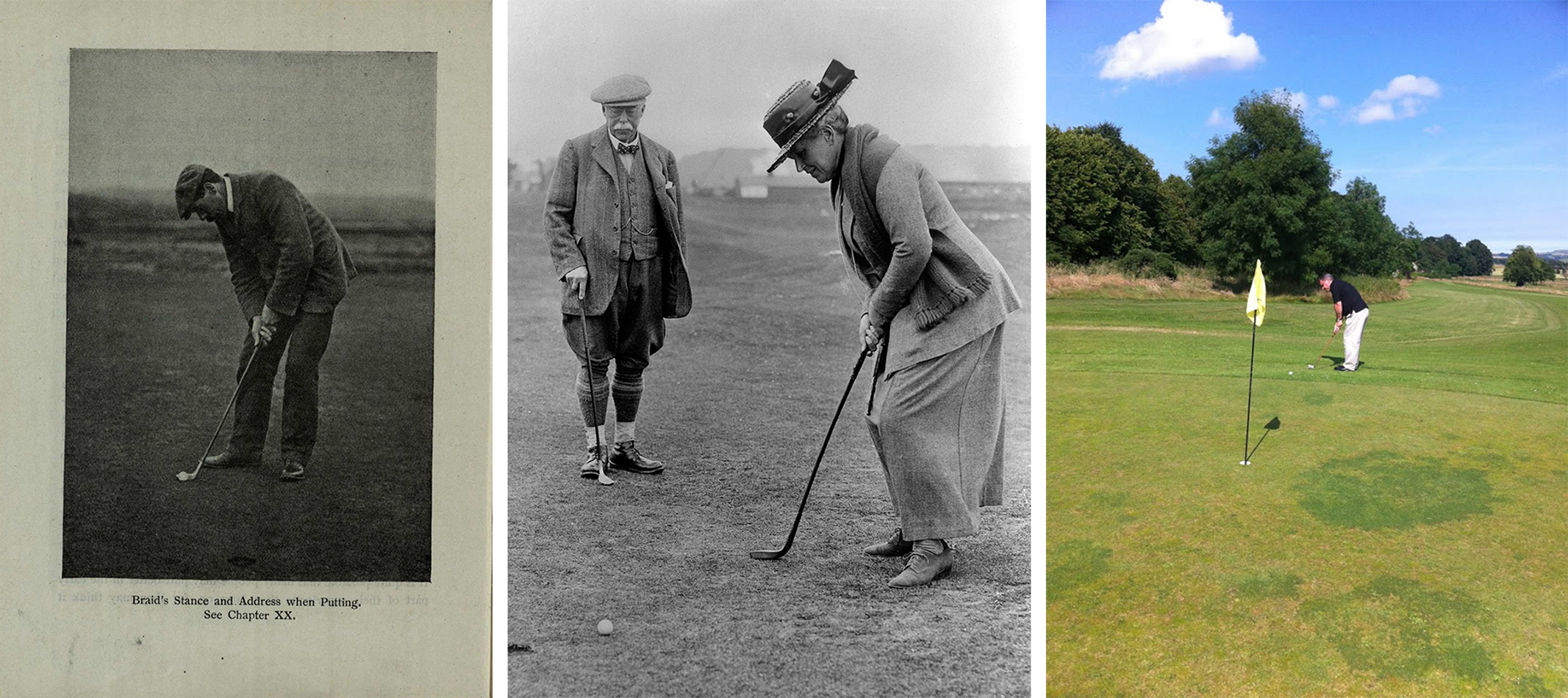
If there is one thing about Kingarrock that I would change then it would be the maintenance of the greens, I would like to see them smoother. But then that would, perhaps, be missing the point; golf in Braid’s time was played on less than perfect surfaces – the greenkeepers offered the best that could be achieved by the agronomy and the equipment of the time but it was imperfect all the same. Notwithstanding these imperfections, Braid’s advice on putting is as true on modern surfaces as it was on those of the early 20th century: hit the ball squarely and study the line.
While the technological development in equipment was inevitable, it is not necessarily to be welcomed. My experience at Kingarrock demonstrated that making a slightly more rounded swing with a little more dominance of arms over hips – exactly as Braid suggests – allows for golf to be played relatively successfully with old equipment on a traditional course. Certainly I had to adapt, but I did not find myself longing for my regular clubs – quite the opposite, I was ready to be converted and go back to the hickory sticks that I learned with some 35 years ago. But only on a course designed to accommodate them…
The ability to work within the confines of early 20th century club technology and on less than perfect playing surfaces demonstrates that Braid and his peers would be able to stand shoulder to shoulder with today’s professionals, probably above the majority of them. His diagram of feet positioning for various shots, for example, shows just how varied his game had to be to cope with the course put in front of him – a far cry from the target golfers who play on manicured, receptive courses which require little imagination, but vast length off the tee. These feet positions work just as well with today’s clubs by the way, but are now more often accompanied with impenetrable jargon from over-hyped analysts.
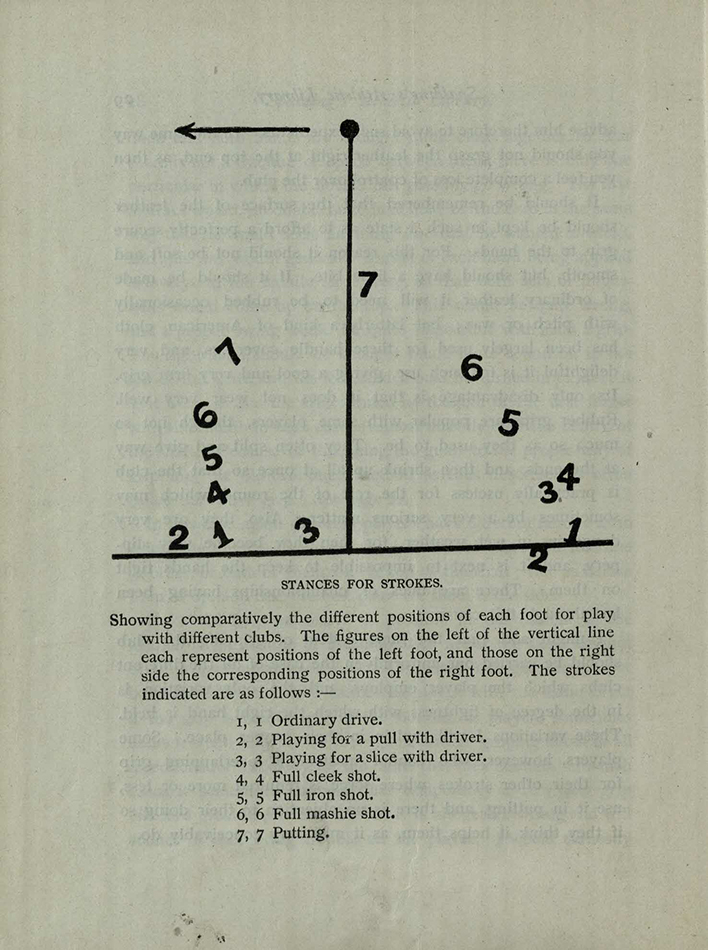
The technological advances have also meant that a lot of classic courses have had to be lengthened and adapted to such an extent that they are almost unrecognisable. Augusta (where the Masters is played every year) saw Gene Sarazen hit ‘the shot heard round the world’ when he holed a three wood for his second shot on the 15th hole in 1935. At this year’s Masters the same hole – lengthened considerably since then – was reached with a drive and a wedge (more or less the shortest club in the bag – an old-fashioned niblick): hardly the challenge that it was meant to be when the hole was originally conceived.
However some things will never change – for example the etiquette of golfers should be at the forefront of any group of golfers. Indeed in Braid’s book he considered a breach of etiquette as being “…the worst fault a golfer can commit.” Such polite and gentlemanly manners seem to have come easy to Braid, all the more remarkable considering the world he lived in: the course he designed in his home town of Elie, for example, refused him entry to the clubhouse because of his humble origins – his father was a ploughman. To this day Elie Golf House Club segregates men and women in the clubhouse, as I say, some things will never change. At Kingarrock however, the welcome is warm and enthusiastic and the golf on offer a thing of beauty and a reminder of a simpler, less complicated game.
-Trevor Ledger
Levy Project Golf Cataloguer
With thanks to Chris Toll of Ginger Beer Golf Travel and David Anderson of Kingarrock.
I still use a Jigger which belonged to my Mother and does sterling work on appoaching greens
Wonderful - I think that my use of a modern hybrid is a kind of homage to a jigger.